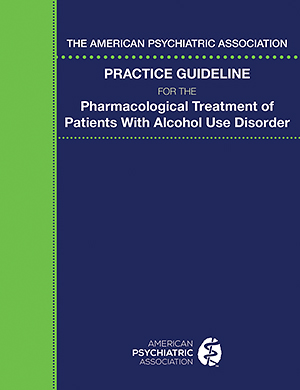Glossary of Terms
Avoiding or refraining from the intake of alcohol.
An acute illness characterized by inflammation of the liver. Although hepatitis is most commonly due to viral infection, it can also result from other infections, heavy alcohol use, toxins, certain medications, and autoimmune disease. In addition to a pattern of hepatocellular injury, individuals with hepatitis have either jaundice or elevated serum alanine aminotransferase (ALT) or aspartate aminotransferase (AST) levels. Hepatitis can be asymptomatic or associated with fatigue, anorexia, nausea, and abdominal pain. Depending on the cause of the hepatitis, fever, headache, vomiting, or diarrhea can also be present (National Institute of Allergy and Infectious Disease 2017; National Library of Medicine 2017b).
Behaviors including risky or harmful alcohol use (U.S. Preventive Services Task Force 2013).
A characteristic syndrome that develops within several hours to a few days after the cessation of (or reduction in) heavy and prolonged alcohol use. See DSM-5 (American Psychiatric Association 2013) for the full criteria for alcohol withdrawal.
The process of obtaining information about a patient through any of a variety of methods, including face-to-face interview, review of medical records, physical examination (by the psychiatrist, another physician, or a medically trained clinician), diagnostic testing, or history taking from collateral sources (American Psychiatric Association 2016).
A defined characteristic that is measured as an indicator of normal biological processes, pathogenic processes, or responses to an exposure or intervention, including therapeutic interventions. Molecular, histologic, radiographic, or physiological characteristics are types of biomarkers. A biomarker is not an assessment of how an individual feels, functions, or survives (FDA-NIH Biomarker Working Group 2016).
A plan of treatment that is developed as an outgrowth of the psychiatric evaluation and is modified as clinically indicated. A comprehensive treatment plan can include nonpharmacological treatments, pharmacological treatments, or both. It is individualized to the patient’s clinical presentation, safety-related needs, concomitant medical conditions, personal background, relationships, life circumstances, and strengths and vulnerabilities. There is no prescribed format that a comprehensive treatment plan must follow. The breadth and depth of the initial treatment plan will depend on the amount of time and extent of information that are available, as well as the needs of the patients and the care setting. Additions and modifications to the treatment plan are made as additional information accrues (e.g., from family, staff, medical records, and other collateral sources) and the patient’s responses to clinical interventions are observed.
A situation in which a drug or procedure should not be used because it may be harmful to the patient.
A strategy that aims to reduce or minimize the adverse health, social, and economic consequences related to the use of alcohol and other substances.
Deterioration of liver function that results in coagulation abnormality (usually an international normalized ratio [INR] greater than or equal to 1.5) and any degree of mental alteration (encephalopathy). Although there is no identifiable cause in approximately 15% of cases of acute hepatic failure, typical etiologies include drug-induced liver injury, viral hepatitis, autoimmune liver disease, and shock or hypoperfusion (Lee et al. 2011).
A statistical estimate of the proportion of the variance that is due to heterogeneity.
A comprehensive assessment of a patient that has the following aims: identify the reason that the patient is presenting for evaluation; establish rapport with the patient; understand the patient’s background, relationships, current life circumstances, and strengths and vulnerabilities; establish whether the patient has a psychiatric condition; collect information needed to develop a differential diagnosis and clinical formulation; identify immediate concerns for patient safety; and develop an initial treatment plan or revise an existing plan in collaboration with the patient. Relevant information may be obtained by interviewing the patient; reviewing prior records; or obtaining collateral information from treating clinicians, family members, or others involved in the patient’s life. Physical examination, laboratory studies, imaging, psychological or neuropsychological testing, or other assessments may also be included. The psychiatric evaluation may occur in a variety of settings, including inpatient or outpatient psychiatric settings and other medical settings. The evaluation is usually time intensive. The amount of time spent depends on the complexity of the problem, the clinical setting, and the patient’s ability and willingness to cooperate with the assessment. Several meetings with the patient (and family or others) over time may be necessary. Psychiatrists may conduct other types of evaluations that have other goals (e.g., forensic evaluations) or that may be more focused and circumscribed than a psychiatric evaluation as defined here. Guidelines are not intended to address such evaluations (American Psychiatric Association 2016).
An alcohol use disorder as defined by DSM-5 criteria that is associated with the presence of 4–5 symptoms for moderate AUD and 6 or more symptoms for severe AUD (American Psychiatric Association 2013).
Any of a wide variety of interventions other than medications. Some of the nonpharmacological treatments for alcohol use disorder include motivational enhancement therapy, cognitive-behavioral therapy, 12-step facilitation therapy, and community-based peer support groups such as Alcoholics Anonymous.
Drugs or supplements that can be bought without a prescription.
Clinician- or patient-administered tests or scales that provide a numerical rating of features such as symptom severity, level of functioning, or quality of life and have been shown to be valid and reliable (American Psychiatric Association 2016).
Inability of the kidney(s) to function normally, typically described in terms of reductions in creatinine clearance or estimated glomerular filtration rate (eGFR). An eGFR of 60–89 mL/min/1.73 m2 indicates mildly reduced kidney function, an eGFR of 30–59 mL/min/1.73 m2 indicates moderately reduced kidney function, an eGFR of 15–29 mL/min/1.73 m2 indicates severely reduced kidney function, and an eGFR of less than 15 mL/min/1.73 m2 indicates a very severe reduction in kidney function or end-stage renal disease (Kidney Disease: Improving Global Outcomes (KDIGO) CKD Work Group 2013).



